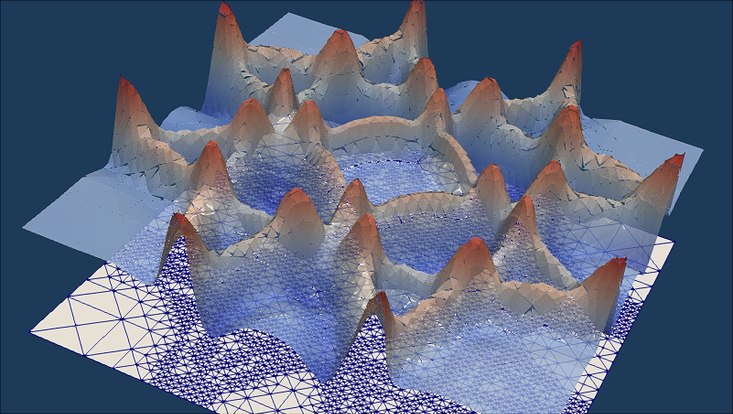and Society (CLICCS)
Meshes That Know What They’re Doing
12 October 2021, by Stephanie Janssen

Photo: Nicole Beisiegel
Smart math never does more work than is absolutely necessary. This not only saves time, but also memory on your hard drive. For instance, if you need to describe the dynamics of a cloud or an ocean wave, you especially need data from the edges of the object or phenomenon. After all, that’s where things change rapidly, while much remains unchanged in the “middle.”
Professor Jörn Behrens works with what are known as adaptive meshes, which can automatically adjust to the movements of a given phenomenon. As a result, they essentially cover its edges using a fine net, and use a coarser one where there’s less going on, all in real-time. In the graphic we can see a prototypical sample calculation: an impulse is applied to the exact middle of a square basin of water, just as if a stone were dropped in it. Our image shows the wave pattern that is produced. Below the pattern lies the adaptive mesh – with more data points at the peaks and troughs, and fewer in the calmer, flatter zones.
What else the experiment shows: there’s so much going on in this water field that it’s nearly completely covered with a fine mesh. In such cases, does the computing power needed for a dynamic mesh really pay off? Behrens and his colleagues have for the first time developed criteria for assessing the efficiency of these meshes, making it possible to determine whether they would pay off in a given situation.
CLICCS Quarterly
The article was published in CLICCS Quarterly, the news from the Cluster of Excellence every three month. Find full issue -> here.
Research paper:
Beisiegel, N., Castro, C.E. & Behrens, J. Metrics for Performance Quantification of Adaptive Mesh Refinement. J Sci Comput 87, 36 (2021).


